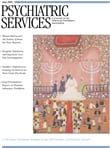News Briefs
Housing affordability crisis for people with disabilities: In 2008 the national average rent for a modest one-bedroom unit reached $749 per month, according to the U.S. Department of Housing and Urban Development (HUD). For the more than four million people with disabilities who rely on Supplemental Security Income (SSI), this figure exceeds their entire average monthly income of $668. Rising rents are not the only factor in the housing affordability crisis. Annual income for a person on SSI is $8,016, which has fallen to 18.6% of the national median income for a single-person household and is 30% below the federal poverty level for an individual. The crisis is described in a new report Priced Out in 2008, the latest in a series published every two years by the Technical Assistance Collaborative (TAC) and the Consortium for Citizens With Disabilities (CCD) Housing Task Force. In 1998, when the first report was issued, there were 44 housing market areas in 13 states where a person on SSI would have to pay more than his or her monthly income for a one-bedroom unit. Ten years later, this was the case in 219 housing market areas across 41 states. The report also describes signs of progress, including 2009 legislation that creates a new National Affordable Housing Trust Fund and that includes tens of billions of dollars in housing relief through changes to the Low Income Housing Tax Credit program and commitments of capital funds to public housing. The 47-page report, which was funded by the Melville Charitable Trust, is available at www.tacinc.org .
Kaiser brief on spending for the dually eligible population: Approximately 8.8 million Medicaid beneficiaries are also enrolled in Medicare. This dually eligible group consists of seniors and nonelderly people with disabilities, and because most are in poor health, it is a costly population to care for. To help state and federal governments with financing and management of these programs, the Kaiser Foundation has compiled a new issue brief (based on data for 2003, the most comprehensive data set available) that describes demographic and health characteristics of this population and patterns of service use and costs. Sixty-one percent of dual enrollees had incomes under $10,000, compared with just 9% of other Medicare enrollees. Even though dual enrollees accounted for less than a quarter of Medicare enrollees (7.1 million versus 30.2 million), total Medicaid and Medicare spending for this group was $147.9 billion, compared with $137.7 billion for all other Medicare beneficiaries. Per capita spending by the two programs for dual enrollees was nearly five times the amount for other Medicare enrollees—$20,902 compared with $4,553. Medicaid covered nearly 60% of total spending by the two programs for this population. The issue brief is available on the Kaiser Web site at www.kff.org .
Spending on child mental health care: In 2006 a total of $98.8 billion was spent for direct medical care and treatment of children. The five most costly conditions, ranked by cost, were mental disorders, asthma, trauma-related disorders, acute bronchitis, and infectious diseases. Total expenditures to treat mental disorders were $8.9 billion, $8.0 billion for asthma, $6.1 billion for trauma-related disorders, $3.1 billion for acute bronchitis, and $2.9 billion for infectious diseases. In terms of number of children treated for the five conditions, asthma was highest. Almost 13 million children were treated for asthma in 2006, followed by 12.8 million children for acute bronchitis, nearly seven million for trauma-related disorders, 4.6 million for mental disorders, and 4.5 million for infectious diseases. Mean expenditures per child for those with expenses were highest for mental disorders at $1,931. Trauma-related disorders averaged $910 per child, followed by $658 for infectious diseases, $621 for asthma, and $242 for acute bronchitis. These figures are from an analysis of the most recent data from the Medical Expenditure Panel Survey, which is summarized in a statistical brief available on the www.meps.ahrq.gov .
Bazelon fact sheet on supportive housing: The Bazelon Center for Mental Health Law has compiled a seven-page fact sheet that describes the principles of supportive housing for people with mental disabilities. It summarizes research showing that supportive housing is a key factor in recovery and community integration and that it reduces housing costs for this population. It calls on service systems to make supportive housing the primary option by replacing existing congregate settings with scattered-site housing—with housing units scattered either in a neighborhood or a single building. It also calls on public officials and stakeholders to ensure that services are not linked to housing and participants are not required to use services or supports to receive or keep their housing. The fact sheet can be downloaded from the Bazelon Center's Web site at www.bazelon.org .



